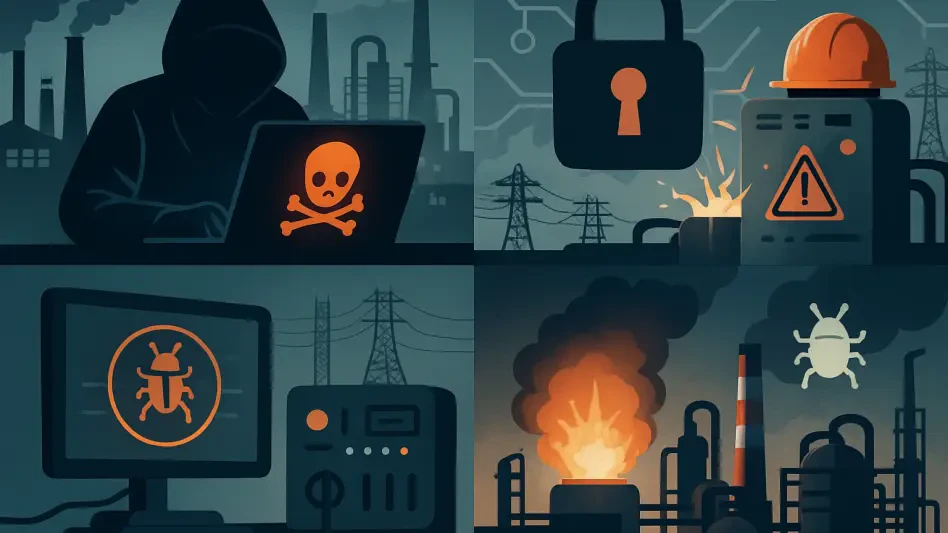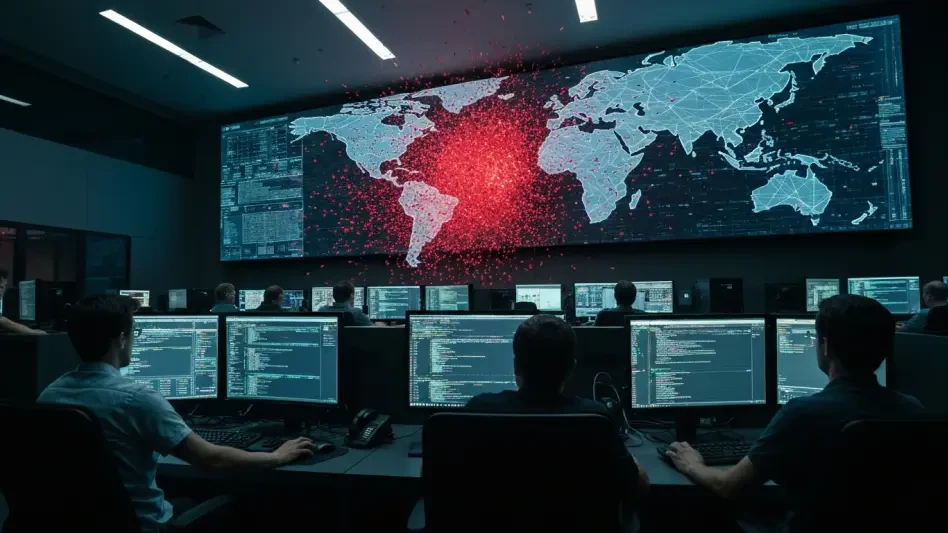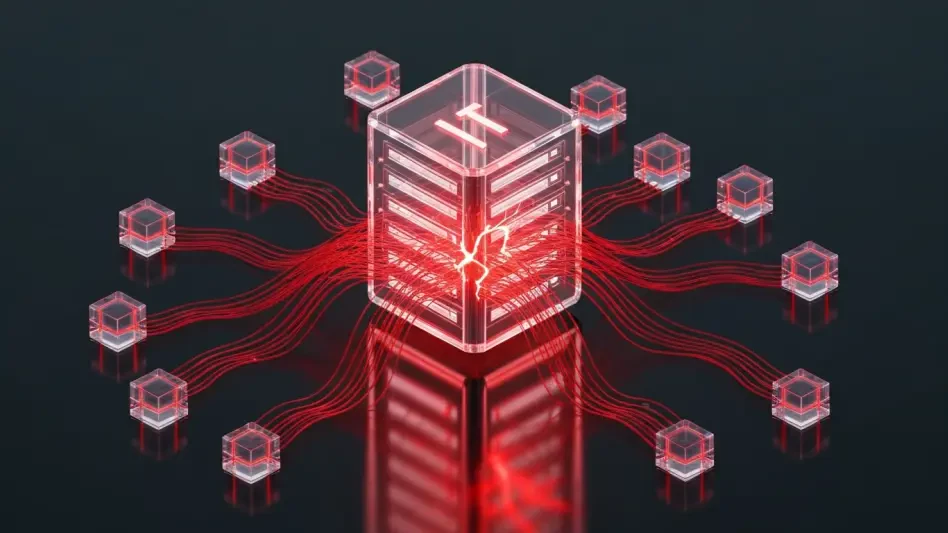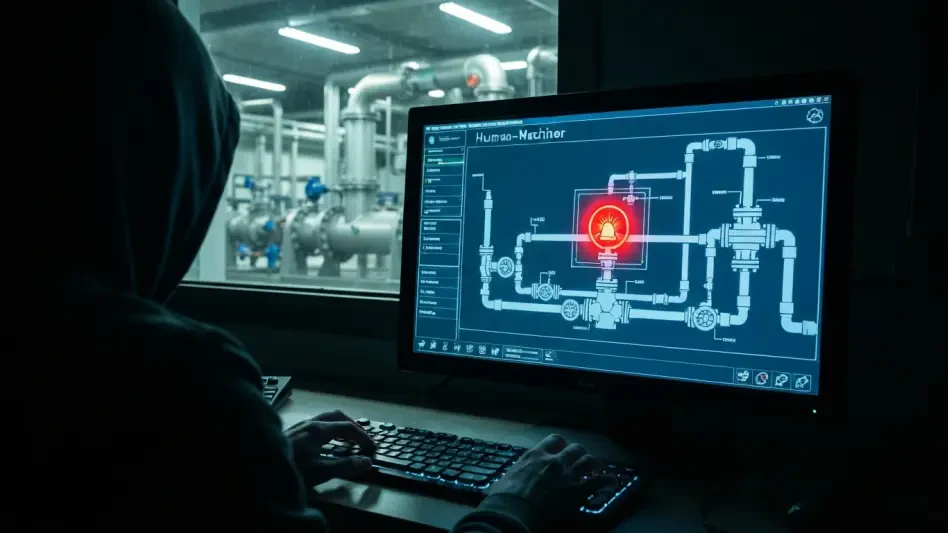What happens when the heart of an industrial empire—once thought to be steel and machinery—becomes a silent stream of data vulnerable to invisible attacks? In 2025, the industrial landscape is a battleground where cyber-physical threats can shut down power grids or halt production lines with a single breach, demanding a radical rethinking of what constitutes the most valuable assets in this hyper-connected era. This alarming reality, underscored by millions of attacks on critical infrastructure annually, highlights the high stakes as digital and physical worlds collide, exposing vulnerabilities that could cost billions and disrupt lives.
The significance of this transformation cannot be overstated. As industrial systems integrate technology at an unprecedented pace, the traditional view of crown jewels—key assets like factories or equipment—has evolved to include data flows, algorithms, and remote connections. Protecting these newly defined treasures is not just a technical challenge but a matter of national security and economic stability. With nation-state actors intensifying their focus on critical sectors, understanding and safeguarding these assets is paramount for any organization aiming to survive in this high-risk digital age.
Hidden Targets in Plain Sight
In today’s industrial ecosystem, the most critical components are often not the visible machinery but the unseen digital threads that bind operations together. A power plant’s turbine might still be essential, but the software controlling it, or the cloud-based data it relies on, can be just as vital—and far more exposed. Cyber attackers exploit these connections, turning what was once a physical stronghold into a gateway for disruption, capable of paralyzing entire sectors in moments.
This shift marks a profound change in how industrial vulnerabilities are perceived. The convergence of Operational Technology (OT) and Information Technology (IT) has created systems where a single compromised link can cascade into catastrophic failure. For instance, a breach in a remote access gateway could allow attackers to manipulate production settings, leading to safety hazards or massive downtime. Such scenarios reveal how digital dependencies have redefined the very foundation of industrial value.
Recognizing these hidden targets is the first step toward resilience. Many organizations remain unaware of the full scope of their critical assets until a crisis strikes, exposing overlooked weaknesses. As digital integration deepens, the need to map and understand these cyber-physical intersections becomes a non-negotiable priority for maintaining operational integrity in an increasingly hostile environment.
Why These Assets Matter More Than Ever
The urgency to protect industrial crown jewels has surged with the rise of sophisticated cyber threats targeting critical infrastructure. Between 2025 and 2026, global cybersecurity reports estimate that attacks on sectors like energy and water will increase by over 20%, with millions of incidents occurring each year. These are not mere nuisances but calculated strikes, often by nation-state actors, designed to destabilize economies and endanger public safety.
Consider the energy sector, where nearly 60% of cyberattacks are linked to state-backed hackers, according to recent industry analyses. A single successful attack on a power grid can leave millions without electricity, disrupt hospitals, and cripple transportation networks. Such high-stakes scenarios highlight why the protection of both physical and digital assets has become a top concern for governments and corporations alike.
Beyond immediate damage, the ripple effects of these breaches erode trust and competitiveness. A manufacturing firm hit by a cyberattack may face not only production losses but also reputational harm as customers question its reliability. In this interconnected world, safeguarding redefined crown jewels is not just about preventing loss—it’s about preserving the very lifeline of modern society.
The New Face of Critical Assets in a Digital Age
Gone are the days when industrial crown jewels were solely heavy machinery or sprawling facilities. Now, they encompass a complex web of digital elements, from algorithms optimizing production to cloud platforms storing operational data. Industry projections suggest that by 2027, the importance of data pathways will rival that of core applications in ensuring safety and uptime across sectors.
This redefinition extends to interdependencies within supply chains and third-party integrations. Digital twins—virtual replicas of physical systems—and remote access tools have become indispensable, yet they introduce risks if not secured properly. Poor management of these connections can lead to operational chaos, as seen in cases where a vendor’s compromised system allowed attackers to infiltrate a major utility provider.
Moreover, the stakes now include intangible assets like brand reputation. A cyber breach that exposes sensitive data or disrupts service can damage public trust as severely as a physical breakdown. This broader scope demands a fundamental shift in how organizations prioritize and protect what matters most, recognizing that a single digital weak point can unravel an entire operation.
Voices from the Frontline of Industrial Cybersecurity
Insights from industry leaders paint a vivid picture of the challenges and imperatives in this evolving landscape. Mark Bristow of MITRE emphasizes a proactive stance, stating, “Weaknesses in identity and access management remain a common thread in breaches—defenses must anticipate adversary tactics.” His perspective underscores the need to think like attackers to stay ahead of threats.
Cristina Palomo of Schneider Electric points to systemic gaps, noting, “Limited visibility into OT environments and fragmented teams often hide the true importance of data flows.” Her observation highlights a critical blind spot that many organizations must address to protect their assets effectively. Meanwhile, Eric Knapp of Nozomi Networks offers a holistic view, saying, “Industrial systems are like organisms; interconnections are key, and segmentation can prevent chaotic responses to attacks.” This analogy drives home the importance of a unified defense strategy.
These expert voices, grounded in real-world experience, reflect a shared urgency to redefine and secure industrial crown jewels. Their collective insights reveal that as threats grow—particularly with state-sponsored attacks on the rise—adopting threat-informed and interconnected approaches is essential to counter the sophisticated tactics of modern adversaries.
Practical Strategies to Protect the New Crown Jewels
Defending these newly defined assets requires concrete, adaptable measures tailored to industrial complexities. One effective approach is proactive mapping, using passive discovery tools to identify critical components before they are targeted. As Micah Steffensen from Idaho National Laboratory advises, focusing on functional delivery and system interdependencies—rather than just cataloging assets—ensures a deeper understanding of what truly drives operations.
Layered defenses offer another vital layer of protection. Network isolation, segmentation, and Privileged Access Management (PAM) can significantly reduce exposure without interrupting workflows. For systems too fragile to patch directly, compensating controls like virtual patching and strict access protocols provide a safety net, balancing security with the need for continuous operation.
Finally, treating asset identification as an ongoing process is crucial. Integrating it with risk management, leveraging standards like the NIST Cybersecurity Framework, and fostering collaboration between IT and OT teams through regular exercises can keep defenses aligned with emerging threats. As Osmar Couto from Worley suggests, automated discovery tools help maintain up-to-date maps, ensuring that protection evolves alongside the dynamic cyber landscape.
Looking back, the journey to redefine and secure industrial crown jewels in a cyber world revealed both daunting challenges and innovative solutions. Organizations that adapted by mapping hidden digital assets and embracing layered defenses managed to stay ahead of escalating threats. Those who lagged often faced devastating breaches, underscoring the cost of inaction. Moving forward, the path to resilience lies in continuous vigilance—prioritizing proactive strategies, fostering cross-functional teamwork, and investing in adaptive tools to safeguard what matters most. Only through such sustained efforts can industries hope to thrive amid the relentless evolution of cyber risks.








